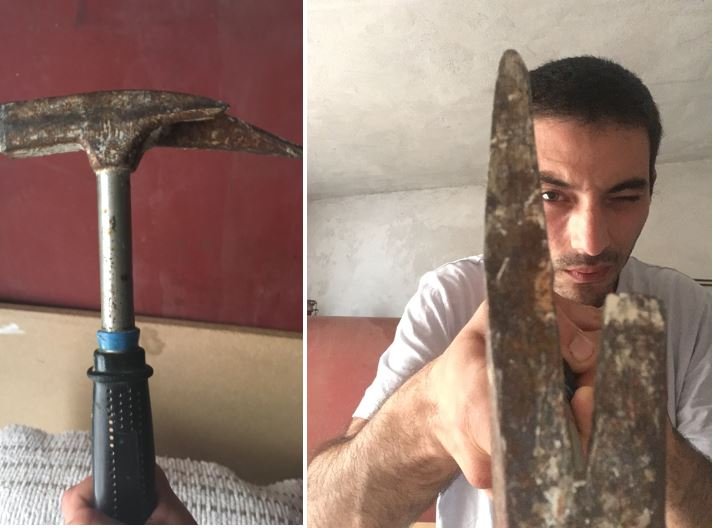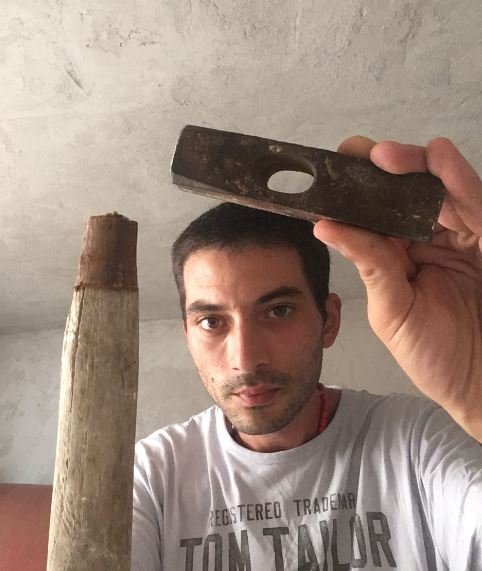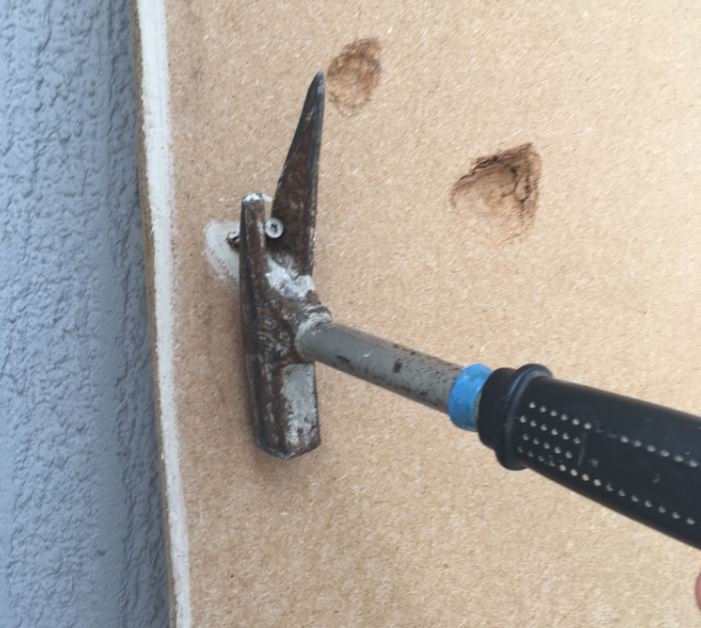I am starting this workshop lessons so if anyone ends up in abandoned tool store or workshop after the nuclear war or asteroid disaster, he could help himself with the knowledge of using manual tools. When a man Steems a lot, he starts forgetting these basics of survival. So, let's start with hammer!
What is a hammer?
A hammer is a tool that delivers a blow to an object. It means that you need to use it when you want to strike something! That "something" in most cases is a nail. Now, I don't mean the nails on your fingers and toes, I mean steel nails with a flat head and a pointed end. We use a hammer to knock a nail into piece of wood or concrete. There are many variations of hammers, depends on what you gonna do with it, but I prefer this one with two plugs on the back side of it's head. I will later explain why!

Humans used stone and rocks to strike on something long before someone contrived to attach a stone on wooden stick with leather strips 30000 BC.

The most of hammers today still have separated handle and head!
There are many variations of hammers, so I will list here some on them!
JUST A HAMMER - This is a hammer that you've seen more than other types of hammer. You can do anything with it and you can't do nothing with it. In many cases, they are old and homemade, so you must be careful and use your hammer with responsibility! You don't want this to happen:

When you work on something try not to hurt anyone!
SLEDGEHAMMER - powerful tool with large metal head, used in destruction work. I use it to break or adjust some parts of the wall.

CLAW HAMMER - This is my favorite type of hammer, it has two plugs on the back of it's head. You can use them to pull your nail out if something goes wrong.

There are many more variations, many types of mallets, gavels, drilling hammers, stonemason's hammers, mauls... But in extreme conditions your claw hammer will do just fine!

